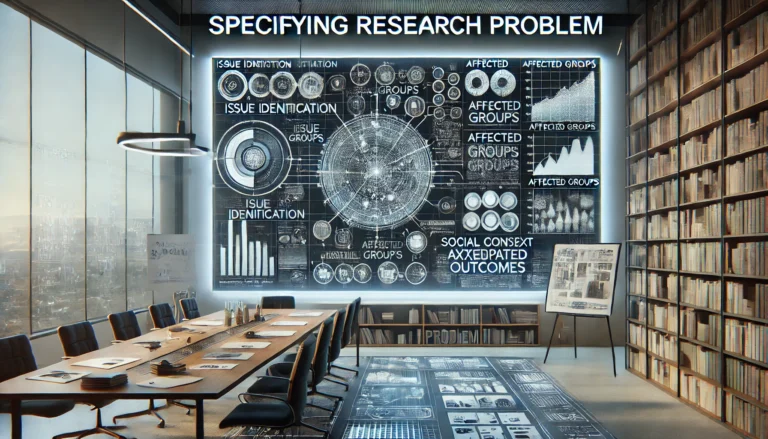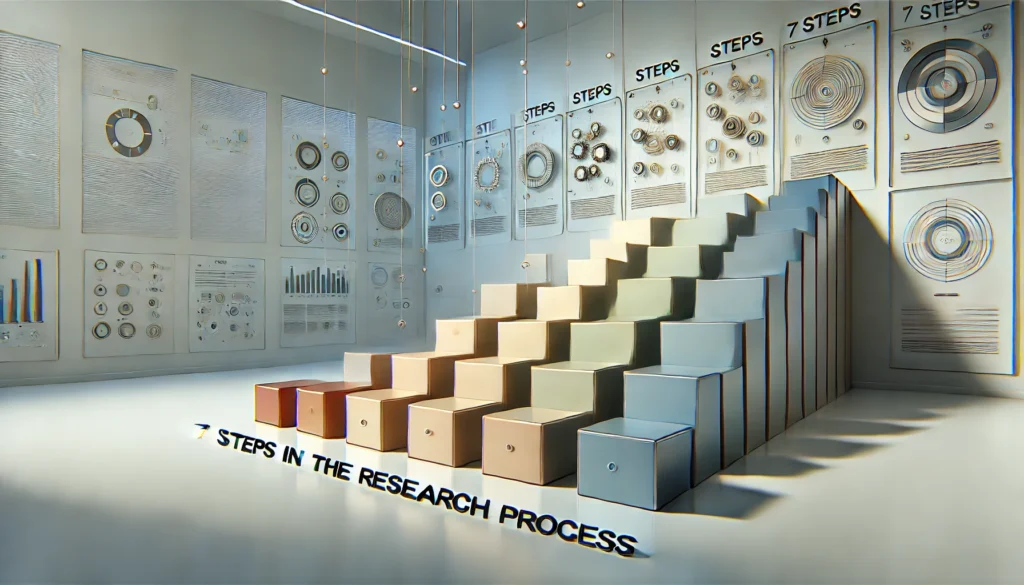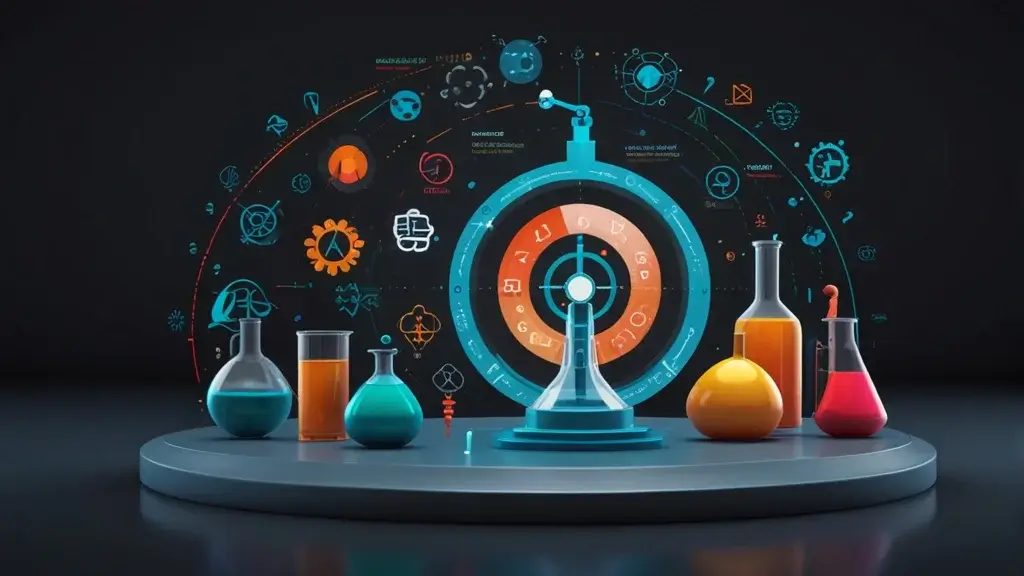Research Process
The steps of research process refer to the stages of conducting research. It involves the following steps:
- Select the field
- Review of literature
- Specifying Research Problem
- Formation of the objectives and hypothesis
- Delineation of sources of data
- Data collection and analysis
- Formal write up
Step-1. Selection of the Field
The first step in the research process is identifying a broad problem area. This first step is crucial and should be framed as a problem statement rather than as a question. The field should be selected on the basis of interest. This process often involves a problem that needs a solution.
It begins with keen observation, curiosity to know, and a desire to sort out. Researchers might draw inspiration from personal experiences, social challenges, or discrepancies in prior findings.
Step-2. Review of Literature
The literature review is concerned with reviewing the existing literature on particular fields. It gives us a view of previous studies in that area. Also, it reveals those areas which need to be addressed and which have already been discussed.
It provides deep information regarding your topic. A literature review is considered the most integral part of the research process because it reveals a gap in knowledge, a variation in current research, or a practical problem that needs a solution.
Step-3. Specifying Research Problem

In any research, you must define your problem and note the dimensions of the issue, the target group affected, the political context, and the anticipated outcomes. A problem that a researcher may need to justify in his research. So that it may be clear why the researcher takes this problem to investigate, what the motivations are, why it is necessary to be researched, and how the research is fruitful for society.
It is formulated with the help of a literature review that identifies key concepts, terms, scope of study, research questions, and objectives. Through a precise definition of the problem, researchers develop a strong basis for the entire research process, ensuring that the research is focused and reachable. It should be attractive and shocking for the reader.
Decide whether your research is exploratory, descriptive, or explanatory. The topic should be short and clear. Also, remember that your topic must be relevant, researchable, feasible, attractive, swift, and ethical.
1. Available of literature
2. Available of respondents
3. Scope or benefits for society
4. Experience of researcher
5. Availability of resources
- Time frame
- Finance
Example: Topic Statement: “Effects of Marital Infidelity on Spouse”
Step-4. Formations of Objectives and Hypothesis
The next step in the research process is to develop research objectives. Any research has some objectives, and it proceeds to achieve them. So, objectives should be clear and have relevance to what you want to find and the gaps revealed through the literature review. These objectives basically guide the directions of the study. The objectives should not be more than five.
Example:
- To find out the socioeconomic effects of infidelity on spouses.
- To investigate the psychological effects of infidelity on spouses.
- To suggest measures for mitigating marital infidelity.
Development of the Hypothesis
A hypothesis is a tentative statement that needs to be tested.” A hypothesis is a statement on an issue based on dependent and independent variables. e.g., People do not send their children to school due to poverty.
If a hypothesis is disproved, it will be a null hypothesis. The hypothesis is developed according to the research questions and objectives of the study. Only those variables are abstracted which are practically testable in the research.
Example:
- There is a significant relation between marital infidelity and divorce.
- More marital infidelity would have more chances of emotional distress.
Step-5. Research Methodology

At this stage, research methods are identified, including the determination of human and geographical research, sampling techniques, sources of data collection, and nature of research method, i.e., qualitative or quantitative. This step requires a lot of care to identify all valid sources of data collection.
In this way, a researcher takes all expected outcomes into consideration during his field visits and makes safety nets for them. This step includes the development of an instrument or tool for data collection (in case of primary data collection), such as a questionnaire, interview schedule, interview guide, etc.
This step is very important in the research process because the primary and secondary data are collected using the method used for data collection. The focus of the instrument is to fulfill the objectives of the study.
Step-6. Data Collection and Analysis
Pretesting
Pretesting commonly aims to test your research tool before going into the field for data collection. It helps to verify the tools and facilities and make improvements.
Analysis of Data
After collecting the data, data needs to be analyzed to get findings. For quantitative analysis, different research softwares are being used. Among these, the Statistical Package of Social Sciences (SPSS) is widely used. Apart from it, many other softwares are also available as ANOVA, and ENVIVO. For qualitative analysis, different qualitative approaches are adopted i.e., ethnographic, grounded theory, case study etc.
Interpretation of Data
After analysis, data is interpreted. It involves the explanations of applied tests, which gives a reader a clear understanding of the results obtained by various tests. In addition, commonly used tests in social sciences research are the T-test, Chi-square, and Regression line. However, for qualitative studies, various methods are applied according to the qualitative approach adopted for research.
Step-7. Formal Right Up
It is the process of report writing following a prescribed format for organizing the research into a composed form.
- Abstract
- Introduction
- Review of relevant literature
- Research methodology
- Study findings and interpretations
- Conclusions and recommendations
- References
- Appendixes






